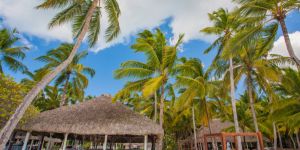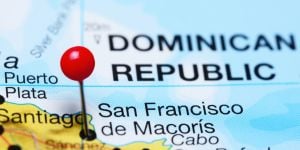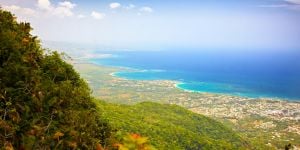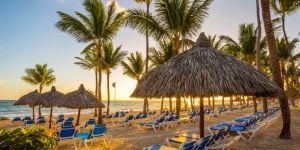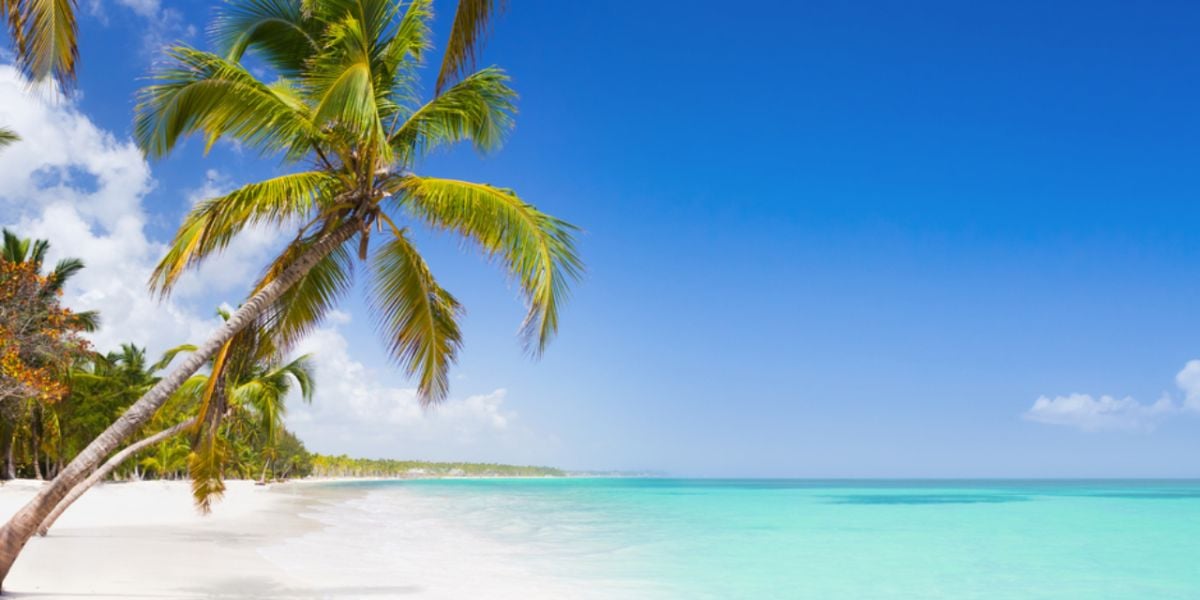
Along the south coast of the Dominican Republic, going from East to West, you will find the sugar town of La Romana, followed by the university town of San Pedro de Macorís, and shortly afterwards the tourist and expatriate town of Juan Dolio. The driving distance from La Romana to Juan Dolio is around one and a half hours, and from San Pedro to Juan Dolio, it is only a 15-minute drive.
General information about these Dominican cities
La Romana is the seventh-largest city in the Dominican Republic, with a population of around 130,000. The city is the provincial capital of the province of the same name. The city of La Romana is linked to the sugar industry, as a large sugar mill was built in the early 1900s, and when sugar came to the area, many Dominicans and freed slaves from British Caribbean islands flooded into La Romana for work. The latter are known as cocolos, and they all have British names, such as Williams and Jones.
In addition to sugar, La Romana is home to the largest exclusive tourist resorts in the Dominican Republic, such as Casa de Campo and its famous golf course. Next door is the tourist fishing village of Bayahibe, with arguably the best scuba diving in the country and the departure point for the famous Saona island.
La Romana also has a cruise terminal and boats for Catalina Island, which is home to an underwater marine park, leave from there.
In addition to sugar, La Romana is famous for its cigars, and the Tabacalera de Garcia factory is currently one of the largest cigar factories in the world, with three world-famous brands produced there: Montecristo, H. Upmann, and Romeo and Juliet.
Driving West on the Coral Highway for an hour, you will reach the city of San Pedro de Macorís, which is again the capital of the province of the same name. Around the same size as La Romana, it is home to the Central del Este University and one of the biggest Dominican baseball teams, Las Estrellas.
San Pedro experienced a significant wave of migration in the late 19th century from Cubans who were fleeing their country's War of Independence. They brought their extensive sugar cane farming knowledge along with them and contributed to making the sugar industry the most important economic activity in the area.
Many Europeans also settled in the city, making it a very cosmopolitan urban center in the early 20th century. Most of the industry centers around the port, the sugar mill, and the Industrial Free Zone.
Driving another 15 minutes towards the West is the tourist town of Juan Dolio. Once a sleepy fishing village, it became a major tourism center and housed five or six all-inclusive hotels all along a beautiful sandy beach on the Caribbean Sea. However, in the years after 2003, the hotels closed and were replaced by tall apartment blocks all along the ocean with the view of becoming the Miami South Beach of the Caribbean. It has the main advantage of being only 20 minutes from the country's main airport, Las Americas, and only 40 minutes from the capital, Santo Domingo. Next door is the still unspoiled fishing village of Guayacanes.
Juan Dolio is very quiet during the week, but during weekends, the Dominicans arrive in their droves from the capital to take up residence in their beach-facing condos.
What about expats in these Dominican cities?
Neither the center of La Romana nor San Pedro has many expats, apart from those who are studying at the university in San Pedro or working in the Free Zones in both cities. However, both have many expats living close by, in Bayahibe, close to La Romana, as well as the exclusive Cap Cana resort, and in Juan Dolio near San Pedro. Given the proximity of the cities to these expat areas, it is easy to find shopping opportunities and carry out any official business with the government offices, banks, etc.
Bayahibe is a charming, quiet village, and several expats who live here are either retired or are involved with the tourism business and consist mainly of Italians and Germans. Juan Dolio, on the other hand, has several North American snowbirds or those who live there full-time. The number of expats decreased dramatically when the hotels closed, and those expats who had businesses related to tourism left. However, more expats are now returning and buying beachfront condos.
Accommodation types in these Dominican cities
There is a range of accommodation available in La Romana and Bayahibe, the latter mainly offering gated communities such as Dominicus and, of course, the million-dollar homes in Casa de Campo. Few people live in La Romana or San Pedro themselves.
In Juan Dolio, there are either the beach-front condos, of which there are more than a dozen to choose from and more being built all of the time, or there are two gated communities built around golf courses – Metro Country Club and Guavaberry. Both have a range of detached homes, as well as some small apartment blocks.
A two-bedroom apartment in Juan Dolio right on the beach costs around US$200,000, and the homes in Metro or Guavaberry are above that price, depending on their size.
If you are looking to rent long-term, your best option would be to get an apartment on Airbnb first and then start talking to locals or check online marketplaces like Facebook, join expat-rental groups, or use Mercado Libre.
The real estate situation in San Pedro and the surroundings might not be as satisfying as in other parts of the country, so the old-fashioned word-of-mouth tradition could probably be your best shot when searching for a place to rent, whether it is a house or a studio.
Cost of living in these Dominican cities
The cost of living is reasonable in this area, but although there are big supermarkets such as Jumbo, they do not have the same range of imported products as can be found in other areas with more tourists and expats. Electricity is served by the National Grid, and as some areas have electricity 24/7, such as Juan Dolio, others experience daily outages, so you need to have a generator or an inverter. Fruits and vegetables tend to be cheaper here as there are large markets in the center of La Romana and San Pedro, and fish is in plentiful supply.
Rent for one person can be as cheap as 150 USD for a one-bedroom apartment or around 350 USD for a three-bedroom in the city center. The utility bill for a one-person household, including water, electricity, gas, heating, etc., should not exceed 23 USD. This does not include the internet, though – count another 50 USD for that every month. The basic products in a local supermarket are fairly cheap, but goods like shampoo or toothpaste are pretty expensive.
Leisure activities in these Dominican cities
While the range of leisure activities may be less than in the major tourist hubs, there is still plenty to do.
In the La Romana area, there are excellent golf courses, day trips to the islands of Saona and Catalina, and excellent diving and snorkeling, not only at Catalina but also in Bayahibe, along with deep-sea fishing.
Casa de Campo is home to a lovely yacht harbor and fabulous shops and also houses Altos de Chavón, which is a replica of a 16th-century Mediterranean village and has art galleries, restaurants, and an amphitheater that plays host to international performing artists.
On the road between La Romana and San Pedro is the world-famous Cave of Wonders (Cueva de las maravillas), which is 82 feet below ground and has an 800-foot trail to see over 400 Taino Indian paintings and engravings.
You can also catch a baseball game in San Pedro, play golf at Metro Country Club or Guavaberry, and enjoy a whole range of water sports in Juan Dolio.
Highlights of the San Pedro area
The Juan Dolio beach
The closest beach to San Pedro de Macoris is Juan Dolio, where you can enjoy plenty of water fun and activities with your family. It has a water- and entertainment park and also a golf course nearby. You can make scuba diving and snorkeling trips and also speed boat tours to explore the surroundings of the ocean. If you are a fan of horses, you can ride along the beach or enjoy a guided tour that usually lasts about three hours.
Los Haitises National Park
A must-do while visiting the San Pedro area is taking a boat trip to the national park and doing some hiking through the rainforest. This doesn't take more than a few hours, and if you want to spend the entire day adventuring, you can easily include some beach time at Playa Rincon. The park itself offers a diverse range of plants, animals (mostly birds), and caves with interesting rock formations. Keep in mind that you have to pay an admission fee – if you book a guided tour, this should already be included in the ticket price.
Cueva de las Maravillas – the Cave of wonders
The Dominican Republic is a true paradise for explorers, and the region around San Pedro and the South Coast, in general, houses some real gems! Another one is the Cueva de las Maravillas, which translates into the Cave of Wonders. Explore the ancient cave systems about 150 feet deep and admire the massive stalactites hanging from the ceiling. For safety reasons, this has to be a guided tour. Pathways are illuminated and cleared. Additionally, you will find handrails throughout the cave to help you find your way. One downside is that you are not allowed to take pictures from the inside, so this memory has to be stored in your thoughts. According to a local legend, the pond inside the cave is supposed to make your dreams and wishes come true.
Restaurants in the Dominican Republic
While there are not as many restaurants in this area as in the North or East of the country, Casa de Campo and Altos de Chavon have some nice restaurants, and there are also a few in La Romana itself, along with various Dominican restaurants; although vegetarians, vegans, or people that require a certain diet might not find much. You probably have to plan a trip to Santo Domingo or order specialty products online.
San Pedro has no restaurants that cater to expats, but in Juan Dolio and Guayacanes, there is a plethora, including Italian, German, and other international ones. Many of the restaurants double as bars and lounges, with live music one night a week. In Guayacanes, Deli Swiss, La Playa, Salitre, Playa El Pescador, Sca Club, St. Tropez Caribe, El Manguilito, and Cococane Beach are the most popular restaurants, and they fill up at weekends with not only expats but also local Dominicans. In Juan Dolio, the most popular restaurants are El Sueño, El Mesón Español, Bistro Marianna, Sal Marina, El Concón, Café del Sol, Paladar, and La Brisa.
Transport in these Dominican cities
There is an international airport in La Romana, but it does not operate many flights compared to other airports in the country, and many only operate in the high season, from November to April. Las Americas airport to the West of Juan Dolio has flights from all over the world and is easily accessible. Those going to the La Romana area can also go through the Punta Cana International Airport.
Within the cities, there are local buses, guaguas, and also motorcycle taxis known as motoconchos. There are fewer long-distance coaches as the local taxi drivers are very heavily unionized, and, to date, have prevented the major coach companies from operating in the area, but there is a regular bus service from La Romana to San Pedro and on to the capital, Santo Domingo. Public transportation and buses are very cheap in this area, but using taxis can add up pretty fast, as a quick eight-kilometer ride (5 miles) costs around 21 USD; in comparison to that, a ticket for local transportation would be less than 1 USD per ride, you can also use Uber or Indrive.
Useful links:
Go Dominican Republic – La Romana
We do our best to provide accurate and up to date information. However, if you have noticed any inaccuracies in this article, please let us know in the comments section below.
